
by Mindy Griffith | Dec 9, 2021 | Educational Articles
Coping with cancer, Covid, or other health or life challenges can make it tough to remember our blessings during this season of giving, gratitude, and celebration we call “the holidays.”
But expressing gratitude goes beyond refocusing away from our challenges to simply find the goodness in our lives. Its power also enables us to accept the struggles that are present in our lives while also fostering resilience and hope – making it a practice worthy of adopting even during the most difficult of times.
Gratitude research finds links with stress relief, improved social ties/relationships, benefits to physical well being like better sleep, lower inflammation, blood pressure, and pain, as well a positive correlation with healthier lifestyle factors like diet and exercise.
Ongoing studies are being conducted to study the effects of what happens to the brain when a person practices gratitude. Findings suggest that it may help train the brain to be more sensitive to the experience of gratitude, which could contribute to lasting effects and improved mental health over time.
Your gratitude practice doesn’t have to be complicated. Adopting gratitude as part of your routine takes consistency and some time. You can be grateful for past, present or future blessings, and the more specific the entries, the better.
Write a thank you note or letter of appreciation to someone, then decide if you want to send it to the person. You don’t have to share it, though it might be a way to strengthen a relationship.
There are apps aplenty in the app stores if you want to record your entries digitally, and they even have reminders. Write in a journal, or simply and silently list three things you are thankful for as you lie in bed and drift off to sleep. Can’t stay awake long enough? Spend a few minutes in the morning before you get up and start your day. This can also be a good way to set an intention for the day. Gratitude, meditation and prayer are also methods of appreciating the joy in our lives. Use whatever works for you!
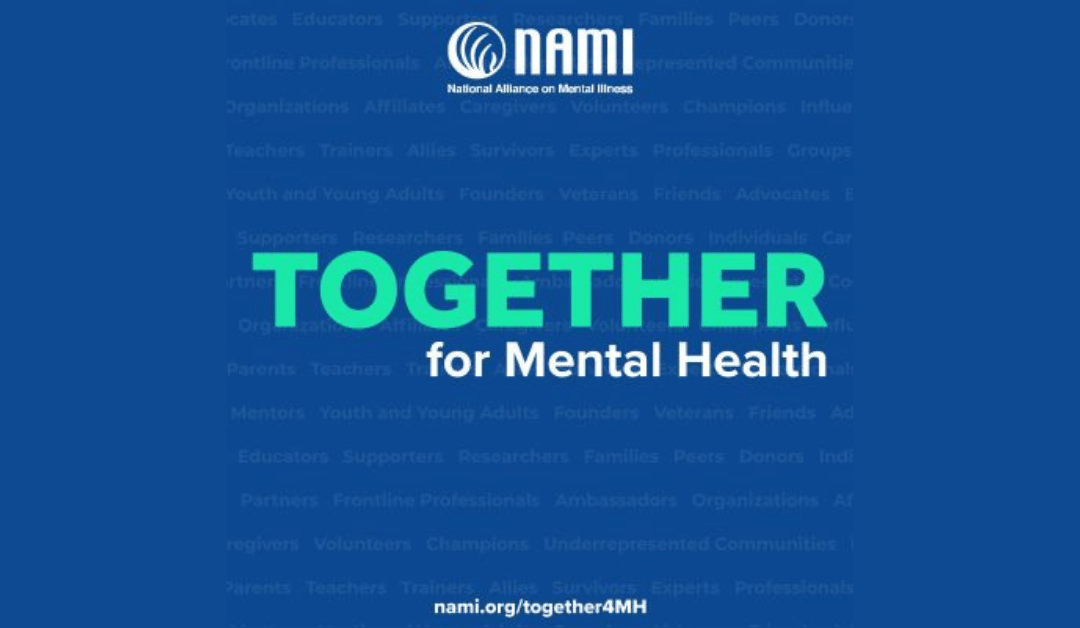
by Bag It Team | Oct 11, 2021 | Educational Articles
If you were diagnosed with a chronic illness such as cancer, heart disease, an autoimmune disease, or diabetes, experiencing a period of sadness, anxiousness, worry, anger, and stress is not uncommon. But if distressing symptoms persist after a couple of weeks, depression could be further complicating your overall health.
Possible signs of depression:
- Persistent sadness, tearfulness, emptiness, anxiousness
- Feeling hopeless, worthless, guilty, or pessimistic
- Irritability, outbursts of anger, frustration
- Feeling helpless
- Restlessness, loss of interest in pleasurable activities
- Lack of energy, fatigue
- Memory issues, difficulty with concentration or decision making
- Sleep disturbances (insomnia, oversleeping)
- Changes in your appetite or weight gain/loss
- Unexplained aches or pains
- Frequent thoughts of self-harm, death or suicide
The good news is that depression is highly treatable, and working with your healthcare team is the place to start on your path to wellness. As with any health condition, the earlier the treatment for depression begins the more effective it is.
Don’t wait for your healthcare provider to bring up the subject. As you prepare for your next appointment, make this one of your top three topics to discuss. Write down your depressive symptoms, how long you have had them, how often, intensity, etc. Be honest and describe their impact on your daily life and those around you.
Bring a complete list of all the medications (and supplements) you take. Also let the doctor know about any personal history of anxiety or depression in yourself or your family. (Remember that everything you share with your healthcare team is private and confidential. It cannot be discussed with others without your permission.)
Your healthcare provider will explore the treatment options with you. Depression is often effectively treated with medication, “talk therapy” (talking one-on-one with a professional), or both. Find what works for you. Be patient as it may take some time to feel better. Research has shown that treating your chronic illness and depression together can help you manage both more effectively and improve your overall quality of life.
Should you find yourself in a crisis, call the NAMI Helpline at 800-950-NAMI or text “NAMI” to 741741

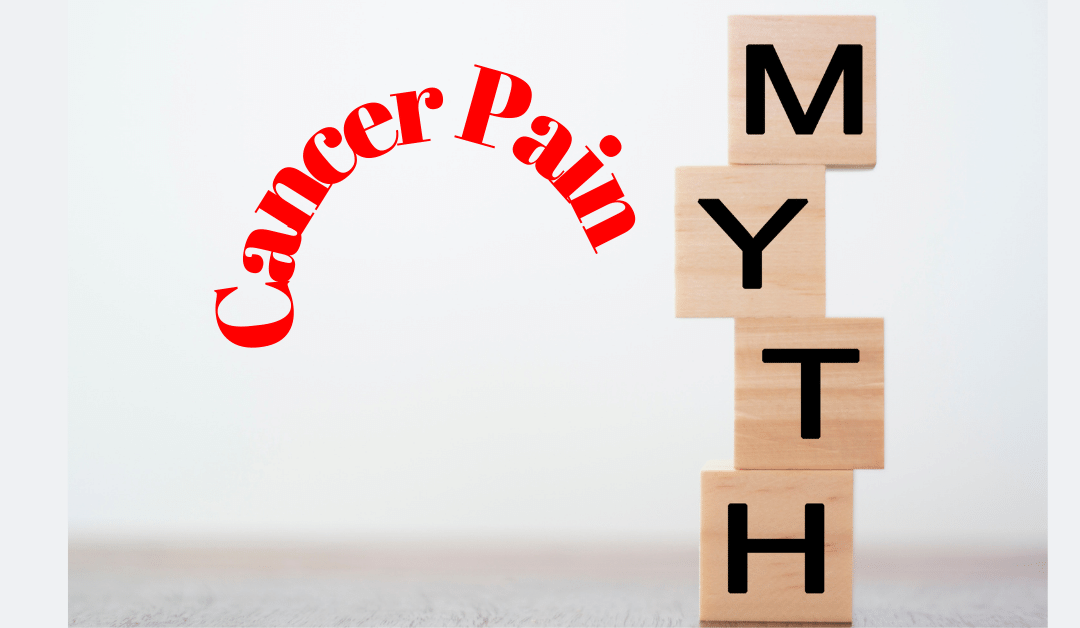
by Bag It Team | Sep 14, 2021 | Educational Articles

Myth #1: Everyone experiences pain with cancer.
Facts:
- About half of people with cancer experience pain at some point – but about half don’t.
- Pain management is part of cancer treatment. In most cases pain can be controlled.
- Those with advanced cancer usually experience more pain than someone newly diagnosed.
Learn about the different types of pain, its causes, and how pain can be measured Causes of cancer pain: Pain can be caused by the tumor itself, cancer tests or procedures done, or it can occur as a side effect of treatment (surgery, chemotherapy, immunotherapy, radiation therapy). There can be more than one cause of pain. Some pain ends when treatment ends but some pain can be ongoing and chronic. Types of Pain:
- Acute pain – this type of pain comes on quickly but it does not last long. It can be mild, moderate, or severe.
- Chronic pain -this type of pain can be consistent or it can get worse, lasing a long time. Again, it can be mild, moderate, or severe.
- Breakthrough pain – this type of pain is usually a sudden increase in intense pain that “breaks through” the pain medications being taken to control pain, typically between does. It lasts for a short time. There are medications specifically used to treat this type of pain.
Pain Severity: Everyone experiences pain differently. It’s a good idea to keep a record of your pain to share with your healthcare team. Using one of the customizable logs in section 2 of Bag It’s My Companion Guidebook is an easy way to track your pain. You can use the scale below to assess your pain’s severity and type, noting when, where, how it feels (e.g. “burning,” “stabbing,” “throbbing) and other pertinent details on the form. Make copies to give to your healthcare team at your next appointment. This will help them to determine a pain management plan tailored just for you. Using a scale from “0” to “10”:
- 0 means no pain
- 1 to 3 means mild pain
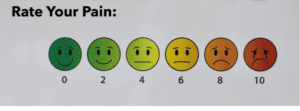
- 4 to 6 means moderate pain
- 7 to 10 means severe pain
Myth #2: Only opioid medications relieve cancer pain.
Facts:
- Non-opioid medications may be effective pain relievers depending on the type of pain someone is experiencing.
- Palliative surgery or radiation therapy is sometimes performed to ease symptoms and increase comfort.
- Palliative (supportive care) is care that focuses on relieving the symptoms of cancer, like pain, and other impacts on your physical, emotional, mental and spiritual well-being.
- Physical therapy, exercise, complementary and integrative medicine therapies such as acupuncture, massage and relaxation techniques are possible ways to manage pain without medication.
A personalized pain management plan prescribed by your healthcare team could include one or more of the above treatments to improve your quality of life. It’s important to talk openly with your healthcare team if you are experiencing pain. In addition to describing the pain in detail, let them know how it is impacting your daily life.
Palliative care (supportive care)
Palliative care is not hospice care. The aim of palliative, or supportive, care is to improve quality of life and maintain independence by reducing symptoms, managing pain, and supporting patients and their families. The aim of hospice care is to help the patient approach the end of life with peace, respect, and dignity, and it includes palliative care. Palliative care is an approach to care that addresses the person as a whole, not just their disease. The goal is to prevent or treat, as early as possible, the symptoms and side effects of the disease and its treatment, in addition to any related psychological, social, and spiritual problems. You can receive palliative care at any age and at any stage. Receiving palliative care does not mean that you will no longer receive treatment for the disease. People often receive treatment to slow, stop, or eliminate cancer in addition to treatment to ease discomfort. In fact, research shows that people who receive both types of treatment often have less severe symptoms, a better quality of life, and report they are more satisfied with treatment. Ask your healthcare team about the ways palliative care might be helpful to you and your family.
Additional Resources on Pain
ASCO Answers: Managing Cancer-Related Pain
Cancer Pain Control: Support for People With Cancer
ASCO’s booklet, Palliative Care
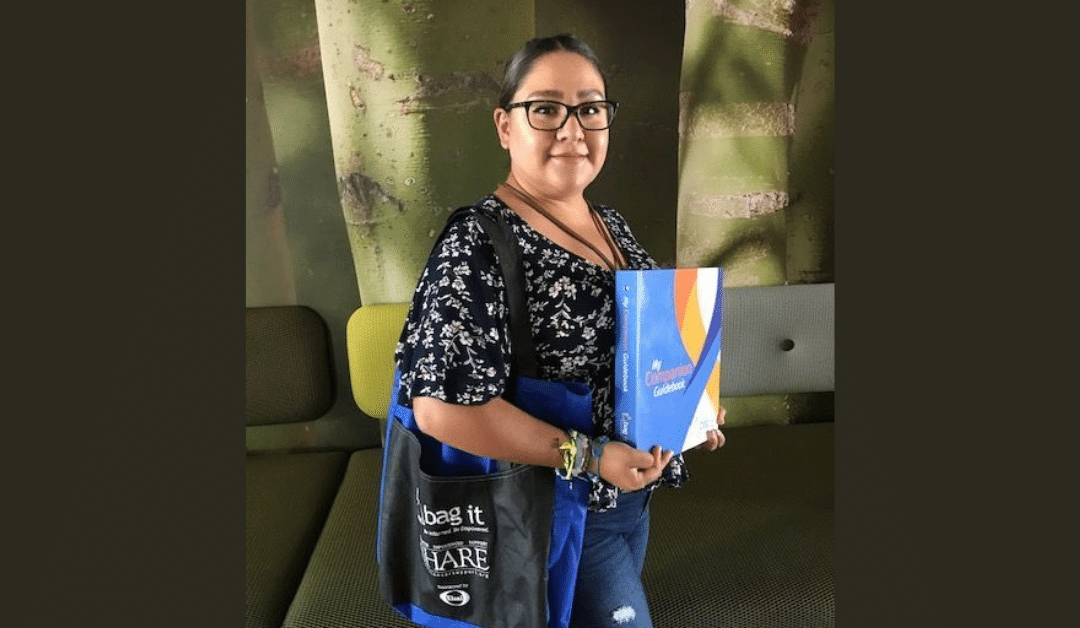
by Bag It Team | Aug 11, 2021 | Educational Articles
 August 1st is World Lung Cancer Day, a day to raise awareness about lung health and how to prevent lung cancer.
August 1st is World Lung Cancer Day, a day to raise awareness about lung health and how to prevent lung cancer.
Did you know…
- About 25% of cancer deaths are from lung cancer – that’s more than colon, breast and prostate cancer deaths combined. (But the good news is that fewer Americans are smoking these days and new lung cancer treatments have been very effective in controlling some types of advanced disease.)
- Active cigarette smoking is by far the leading cause (about 80-90%) of lung cancer, but air pollution, secondhand smoke and other chemicals in the home and workplace, and family history, are also risk factors.
- While some experience symptoms related to the lungs, most people with lung cancer don’t have symptoms until the cancer is advanced.
- If you are at high risk*, an annual low-dose CT scan to screen for lung cancer may save your life. It can detect lung cancer earlier, when it is more treatable. Speak with your doctor about your personal health history and screening risks, as it is not recommended for everyone.

*(i.e. 1 pack a day for 20 years, 2 packs a day for 10 years, etc.)
Click here to order a lung cancer-specific or standard Bag it bag for yourself or as a gift for someone else. (available in English and Spanish)

by Annettra Farrington | Jul 14, 2021 | Educational Articles
Summer’s here and who doesn’t love a barbecue? Grilling is a healthy way to eat less calories and fat though technique is key to serving a meal that is healthy in all ways.
 Chemicals called heterocyclic amines (HCAs) and polycyclic aromatic hydrocarbons (PAHs) are formed when meats are cooked using high-temperature methods and dripping fat and juices cause flames and form in smoke that lands on it. These chemicals can damage our DNA and possibly increase our risk of developing certain cancers. While research is ongoing and the jury is still out, here are some easy ways you can minimize your exposure to these potential carcinogens and still enjoy barbecuing.
Chemicals called heterocyclic amines (HCAs) and polycyclic aromatic hydrocarbons (PAHs) are formed when meats are cooked using high-temperature methods and dripping fat and juices cause flames and form in smoke that lands on it. These chemicals can damage our DNA and possibly increase our risk of developing certain cancers. While research is ongoing and the jury is still out, here are some easy ways you can minimize your exposure to these potential carcinogens and still enjoy barbecuing.
10 tips for safer summer grillin’
- Keep the grill surface clean to help prevent harmful chemicals from building up and transferring to your food.
- Use an acidic marinade containing vinegar or lemon juice and herbs like mint, garlic and rosemary to greatly reduce the formation of HCA (avoid honey or sugary marinades that can cause charring and more HCA).
 Grill fish! It has less fat and cooks faster than meat and poultry.
Grill fish! It has less fat and cooks faster than meat and poultry.- Lightly oil the grill. Don’t use lighter fluid, if possible
- Choose leaner and thinner cuts of meat that will cook faster. Trim any fat or wrap meat in foil to prevent it from dripping and producing more smoke and flare-ups.
- Partially cook larger cuts of meat inside (oven, microwave) and just finish them on the grill, flipping frequently to reduce char marks. Avoid pressing on food with a spatula which releases drippings and creates more smoke.
- Don’t char or burn meat, poultry or fish, and don’t eat any charred or blackened areas.
- Use a meat thermometer to know when food is done. Don’t cook red meat until it’s well-done. Cook at lower temperatures, even if it takes longer.
- If you use a charcoal grill, replace the charcoal after each use.
- Grill veggies and fruits! They are delicious and do not form carcinogens themselves when grilled. (You can wrap them to avoid smoke from grilled meats cooking at the same time)
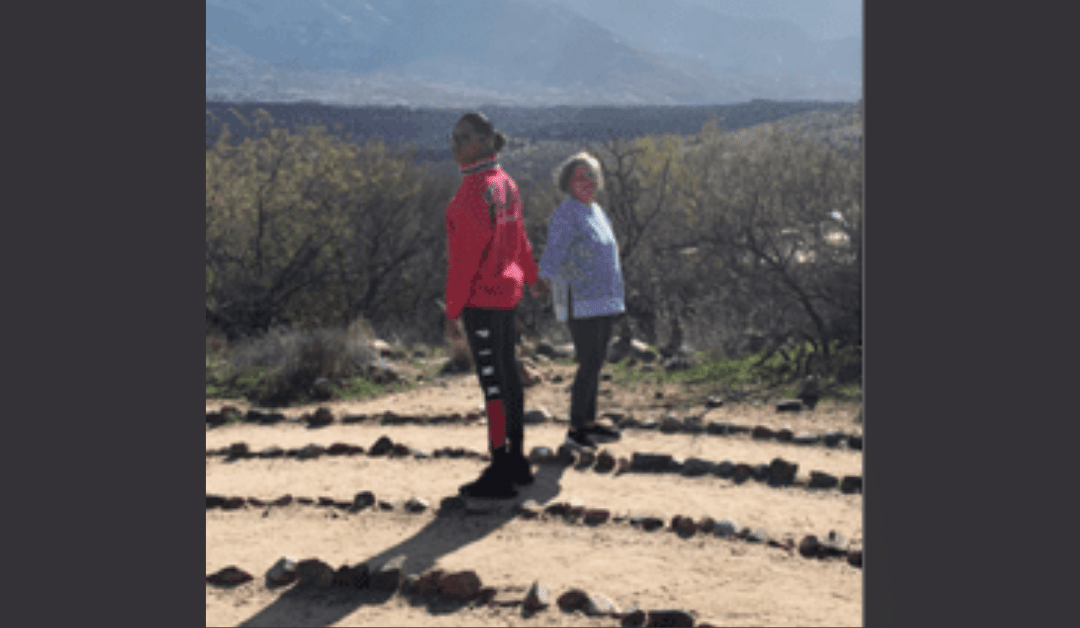
by Annettra Farrington | Jun 8, 2021 | Educational Articles
 The good news is that there are about 17 million cancer survivors alive today in the United States. Better yet is the fact that there are so many long-term survivors (5 years or more after treatment). While some are able to manage the uncertainties and challenges of life brought on by cancer fairly well, for others the impacts on their physical, emotional, or even financial well-being are felt throughout survivorship.
The good news is that there are about 17 million cancer survivors alive today in the United States. Better yet is the fact that there are so many long-term survivors (5 years or more after treatment). While some are able to manage the uncertainties and challenges of life brought on by cancer fairly well, for others the impacts on their physical, emotional, or even financial well-being are felt throughout survivorship.
It’s never too late to ask for help or seek ongoing support to ease cancer’s lingering burdens and improve one’s quality of life
Physical Well-Being
Survivors are often aware they might experience a few long-term physical side effects of cancer after treatment ends, but not all understand that the main types of treatment can also cause “late effects” that may not appear until months or years later. Long-term survivors can also experience other health conditions due to the treatment received, including an increased risk for other cancers.
Knowing all the cancer treatment (s) (type/duration/dose) you received and its potential effects on your health is important. This is where having a Treatment Summary and Survivorship Care Plan comes in especially handy. It will summarize for you and your other healthcare providers (PCP and other specialists) details about your cancer diagnosis, the treatment you received (and continue to receive, if applicable) and the plan for future follow up care and monitoring for late/long- term treatment side effects, recurrence, etc. It considers the needs of the whole person.
If you did not receive this document from your oncology care team, you can request one or create one for yourself with information they provide to you. See additional resources below for more information.
Emotional Well-Being
Even for long-term survivors, anxiety can persist for many years after treatment. Often the anxiety centers around one or more of the following:
- fear of a recurrence or second cancer
- coping with other ongoing health needs and/or any long-term and late-effects of cancer treatment
- the lingering burden of cancer’s impact on household finances
- the continued strain on relationships, struggles with body image, difficulties around intimacy and sexuality.
Support groups, one-on-one counseling, exercise, relaxation techniques and other complementary and integrative therapies like yoga, tai chi, meditation, and many more, can help to manage the worry and stress and refocus one’s attention.
Some survivors experience severe anxiety, PTSD (post-traumatic stress disorder) or continued depression that significantly disrupts their lives. It is important to speak to your healthcare team and work together to find the best treatment possible for your needs.
Remember that you are not alone. No matter the degree of discomfort or distress, reach out for support so you can heal and find the joy in life you deserve.
Financial Well-being
Whether cancer treatment ends or transitions to maintenance therapy, the healthcare costs for follow-up care and late and long-term effects of treatment can be substantial, creating a burden that can be difficult for long-term survivors to overcome. Even with “good” private health insurance that adequately covers cancer treatment, the toll on one’s overall finances can have lasting effects on their lifestyle, future earning potential, and household assets. A loss of income due to the patient’s and/or other household member’s reduced or inability to work – whether temporary or permanent – can create a financial strain. Serious, unresolved financial hardship can make it difficult for survivors to maintain a consistent standard of living. Large amounts of debt can accumulate over time. Filing for bankruptcy due to medical debt is not uncommon for long-term survivors many years after their cancer diagnosis.
If you are receiving extended cancer treatment and feeling the strain of the out-of-pocket costs of your care, share your concerns with your healthcare team and inquire about your options for care and other community resources available to provide some support.
Links to Additional Resources:
Coping Magazine Survivors Guide
American Society of Clinical Oncologists Survivorship
Cancer Support Community Long-Term Health Concerns
Late effects of cancer treatment
Survivorship Care Plans: Life After Cancer
Survivorship Care Plans: During and After Treatment
Cancer Finances

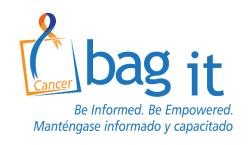






 August 1st is World Lung Cancer Day, a day to raise awareness about lung health and how to prevent lung cancer.
August 1st is World Lung Cancer Day, a day to raise awareness about lung health and how to prevent lung cancer.

 Chemicals called heterocyclic amines (HCAs) and polycyclic aromatic hydrocarbons (PAHs) are formed when meats are cooked using high-temperature methods and dripping fat and juices cause flames and form in smoke that lands on it. These chemicals can damage our DNA and possibly increase our risk of developing certain cancers. While research is ongoing and the jury is still out, here are some easy ways you can minimize your exposure to these potential carcinogens and still enjoy barbecuing.
Chemicals called heterocyclic amines (HCAs) and polycyclic aromatic hydrocarbons (PAHs) are formed when meats are cooked using high-temperature methods and dripping fat and juices cause flames and form in smoke that lands on it. These chemicals can damage our DNA and possibly increase our risk of developing certain cancers. While research is ongoing and the jury is still out, here are some easy ways you can minimize your exposure to these potential carcinogens and still enjoy barbecuing. Grill fish! It has less fat and cooks faster than meat and poultry.
Grill fish! It has less fat and cooks faster than meat and poultry.
 The good news is that there are about 17 million cancer survivors alive today in the United States. Better yet is the fact that there are so many long-term
The good news is that there are about 17 million cancer survivors alive today in the United States. Better yet is the fact that there are so many long-term
Recent Comments